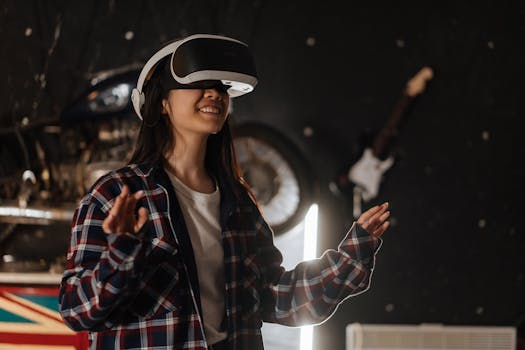Shopping in the Metaverse: Virtual Stores and Digital Goods
The world of shopping is constantly evolving and with the rise of virtual reality, it has now taken a whole new turn. As we enter the metaverse, a virtual world where people can interact and engage with one another, we are also seeing the emergence of virtual stores and digital goods. From fashion to furniture, consumers are now able to browse and purchase products in a virtual environment. In this article, we will take a closer look at shopping in the metaverse and how it is shaping the future of retail.
What is the Metaverse?
Before we delve into the concept of shopping in the metaverse, let’s first understand what the metaverse is. Coined by science fiction writer Neal Stephenson in his 1992 novel Snow Crash, the metaverse is a collective virtual shared space, created by the convergence of virtual reality, augmented reality, and the internet. It is a place where people can gather, create, interact, and even conduct business in a digital environment.
Virtual Stores
As the metaverse grows in popularity, so does the number of virtual stores within it. These stores are virtual replicas of physical retail spaces, giving consumers a similar shopping experience, but in a virtual world. Virtual stores offer a wide range of products, from clothing to electronics, all available at the click of a button. Some companies even use virtual stores to launch new products or collections, creating a buzz and hype around their brand.
The Advantages of Virtual Stores
Virtual stores offer a unique shopping experience that traditional brick and mortar stores cannot. One of the main advantages is convenience. Customers can shop from the comfort of their own home, eliminating the need to travel to physical stores. This is especially beneficial for those who live in remote areas or have a busy schedule.
Another advantage is the cost savings for both customers and retailers. Virtual stores do not require physical space, thus eliminating rent costs. This translates to lower prices for consumers as retailers do not have to pass on these costs to their customers. Additionally, this also reduces the environmental impact of traditional stores, as it eliminates the need for energy and resources to run physical spaces.
Challenges for Virtual Stores
While virtual stores offer many advantages, they also come with their own set of challenges. One of the main challenges is the technological barrier. As the metaverse is still in its early stages, not everyone has the necessary technology to access it. This limits the potential customer base for virtual stores.
There is also the issue of trust and security. Consumers might be hesitant to make purchases in a virtual environment, as they are not physically interacting with the products. This raises concerns about the quality of the products and the security of their financial information.
Digital Goods
In addition to virtual stores, the metaverse also offers a wide range of digital goods for consumers to purchase. These include virtual clothes, avatars, and even virtual properties. Digital goods offer a unique and customizable experience for consumers, allowing them to create their own digital identities within the metaverse.
The Emergence of NFTs
One of the most talked-about digital goods in the metaverse is NFTs (non-fungible tokens). NFTs are digital assets that live on the blockchain, making them unique and one-of-a-kind. They can represent anything from artwork, music, or even virtual land. NFTs have gained popularity in the metaverse as they provide a way for creators to monetize their digital goods.
However, there are also concerns surrounding NFTs, such as their impact on the environment due to the high energy consumption needed to power the blockchain.
The Future of Shopping in the Metaverse
As the metaverse continues to grow and evolve, so will shopping in this virtual world. With advancements in technology, virtual stores and digital goods will become even more realistic, providing consumers with an immersive shopping experience. Augmented reality will also play a significant role, allowing customers to try on virtual clothes or even test out furniture in their own homes before making a purchase.
Furthermore, the rise of cryptocurrency can also change the way we shop in the metaverse. As virtual currencies become more widely accepted, consumers will be able to make purchases within the metaverse using these currencies.
In Conclusion
Shopping in the metaverse is a unique and exciting experience that is still in its early stages. Virtual stores and digital goods offer a glimpse into the future of retail, with the potential to revolutionize the way we shop. As technology continues to advance, the metaverse will become an even more prominent part of our lives, and shopping in this virtual world will become the new norm.









